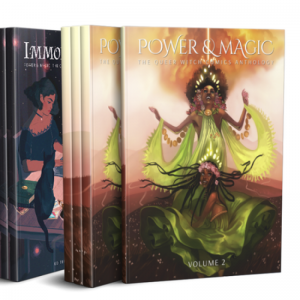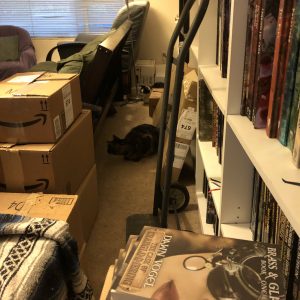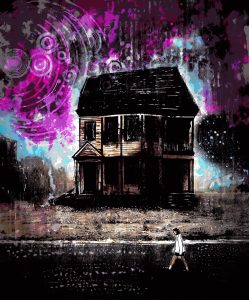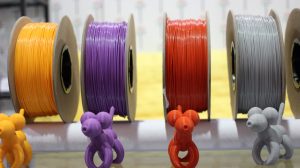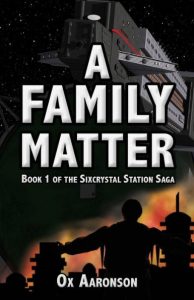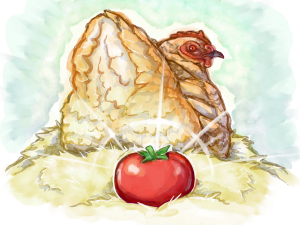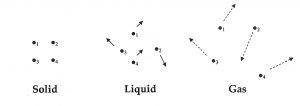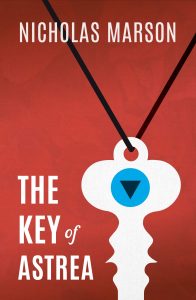 Today, we’re chatting with Nicholas Marson, whose first novel, The Key of Astrea, will be released on Sunday, November 3. Here’s the blurb for the book:
Today, we’re chatting with Nicholas Marson, whose first novel, The Key of Astrea, will be released on Sunday, November 3. Here’s the blurb for the book:
“Sixteen-year-old Jenny Tripper might be crazy…or she might have the power to save the Solar System. At least that’s what the holographic woman in her bedroom tells her. Jenny thinks it’s just another ghost, but after falling into an alternate Universe, she finds herself neck-deep in an interstellar conflict over runaway aliens. She alone may be the key to their freedom … if she can master her abilities without going insane.
Jenny quickly learns that she’s not alone. There are others like her with mysterious powers. Now, she must compete against them for the right to wield a key that will unlock a galactic gateway. But, when a starship arrives to capture the runaway aliens, Jenny must work alongside her competitors to keep the aliens and the galactic gateway out of military control.
This coming-of-age story about a girl who develops psychic powers, fights giants, and takes part in spaceship battles will appeal to readers of science fiction and fantasy–and anyone who loves an adventure.”
DV: Tell us a little about yourself and your writing background.
Nicholas Marson: Professionally, I’m a web designer and developer, but from the time I was nine years old, I’ve been inventing other worlds. My first major project began when I was eleven. My best friend and I created a role-playing game. I drew all the characters, and we worked out the mechanics together. We played it for a few months before getting bored and abandoning the game. It would seem that I enjoyed creating more than experiencing the product. Throughout high school, I wrote papers and short stories, but the next major team project was designing a Super Mario Bros 3 sequel. I drew bosses and outfits for Mario, as well as designing levels and writing dialog. These were all fun expressions of creativity, but nothing serious. It wasn’t until later that I started my first real project.
After high school, I started a company called Armored Chicken Studios along with two friends. We met once a week, for two years, as we developed a story called The Third Age. The premise was that a city-state, called Sardis, shifted into an alternate universe in order to avoid being destroyed. Over the years, the world forgot about Sardis. After 500 years, Sardis returned, but the world was not ready. After 1,000 years, our two protagonists stumble into the city before it shifts a second time. They discover that time passes differently in Sardis, after five years, the city returns for a third time, 1500 years after it first left. This time, the world is ready, and the two warring superpowers destroy Sardis in their attempt to capture it. Each protagonist is taken prisoner by a separate superpower. Unfortunately, the project was never completed, though I did create a short art book for my junior graphic design course which contained the characters, and settings we invented for The Third Age.
DV: What was the inspiration for your novel?
NM: I wanted to put a movie on in the background while I was working from home, but I was bored with my usual go-tos. Instead of complaining (though I did complain), I decided to write a book. I thought, if nothing came of it, I would at least learn how difficult it was to create good entertainment. The first step was to break down my favorite movies in order to figure out why I liked them. So, I created a spreadsheet with Star Wars, Harry Potter, and The Matrix. Then, I examined them scene-by-scene, and to my surprise, a pattern started to emerge. After a quick internet search, I discovered that Joseph Campbell already did this work back in 1949, and George Lucas based Star Wars on the monomyth. But I wasn’t discouraged, because I now had a blueprint to follow.
DV: You mentioned a mad scientist character in your novel. Tell us more about them!
NM: That would be Ramus. He is an immortal alien who crash-landed on an alternate Earth thousands of years ago. Now, he is a tech-trillionaire who made his fortune reverse-engineering alien technology. Yet, there is a metamaterial that he’s been unable to reproduce in his many thousands of years of life. It’s called nexum, and it composes the artifacts responsible for faster than light travel. When a group of alien refugees arrives on Earth, with a forge capable of producing nexum, Ramus comes up with a plan to steal it for himself.
DV: What is the coolest thing about being an author?
NM: Honestly, I don’t feel like an author. I suppose it’s a case of impostor syndrome. Like, if I say I’m an author, then the author police will come and serve me with a fine. Right now, there are two emotions at war after finishing my novel. One is a great sense of accomplishment. The other is being nervous as to how my novel will be perceived.
DV: What are you working on next?
I have about a hundred pages of notes for the sequel to The Key of Astrea, so writing that novel is my first priority. After that, I have a fascinating concept for a novella that exists in the same universe. Without giving anything away, I would describe it as a cross between Inception and Stranger Things.
Thanks, Nicholas! We’re looking forward to checking out your book!

